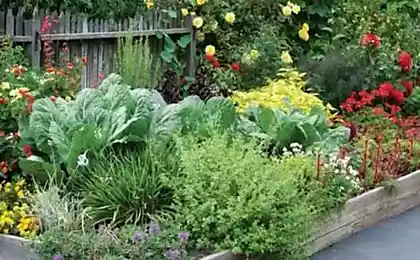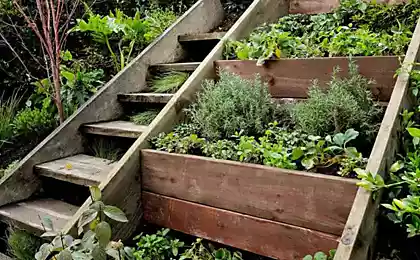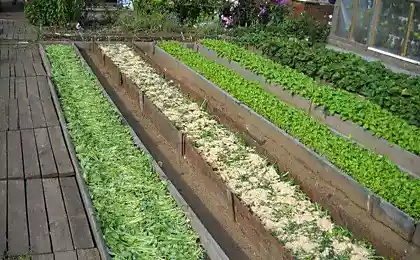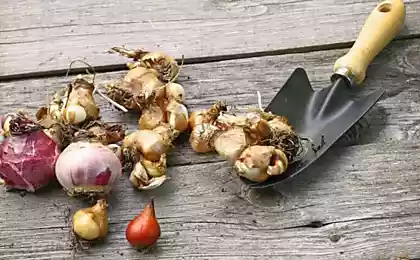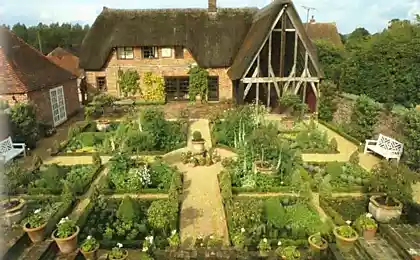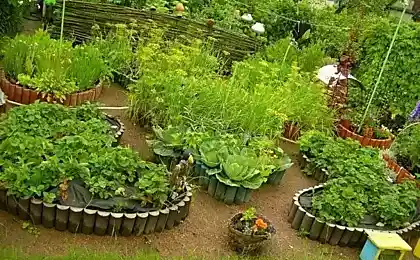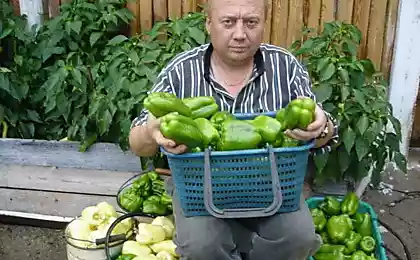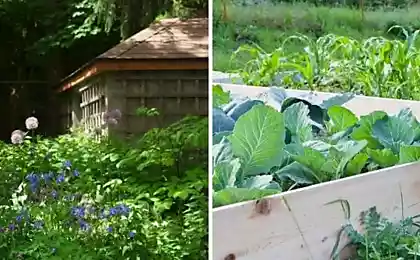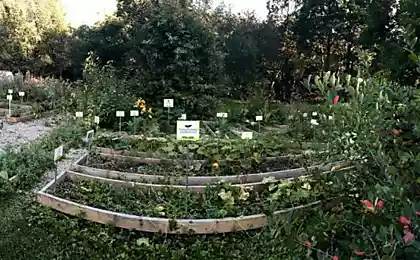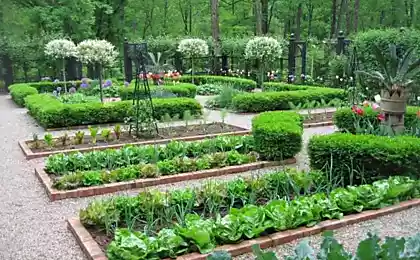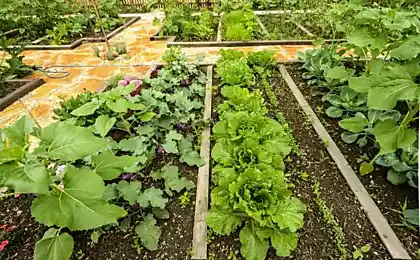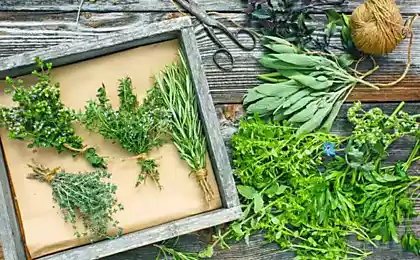241
Secrets of joint planting of vegetables
Even in ancient times, people noticed that the neighborhood of vegetables with some plants can significantly increase their yield, and with others - can ruin it altogether.

Later, scientists figured out how plants help each other get nutrients, attract beneficial insects for pollination or control pests.
Plants that “friend” and grow better together are called companion-plant. Tomatoes, for example, like the neighborhood of carrots, dill and basil, and the neighborhood of potatoes is harmful.
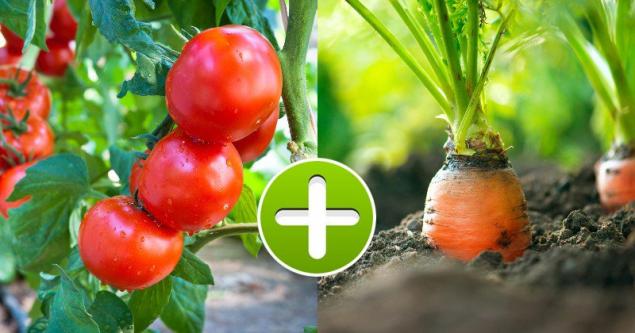
The strong aroma of basil scares away pests, and carrots, dill, parsley and parsnips attract praying mantises, ladybugs and spiders. These predatory insects feed on bugs that have a habit of spoiling tomatoes.

Tomatoes and potatoes belong to the same nightshade family, and therefore are subject to the same diseases and pests. Together, they will get phytofluorosis faster, and other diseases will spread to them at an amazing rate.
Smooth rows of vegetables with labels are undoubtedly pleasing to the eye and make harvesting easier. However, in nature, we do not see rows anywhere, and few plants grow grouped in homogeneous groups.
Imitating natural biodiversity may make your garden less tidy, but it has been proven to help vegetables grow better. Neighborhood with companion plants makes them more resistant and protects against insects and diseases.

This also explains the strange idea of planting flowers between vegetables, such as velvets, marigolds or nasturtia. Useless, it would seem, flowers attract insect pollinators and thus increase the fertility of squash, peas, cucumbers, tomatoes.

Finally, some plants just don’t get along and get sick when they have to share root space. Pepper and beans do not like to be near each other, peas prefer to be away from onions, and salad does not like to be near broccoli.
List of companion plants
Cucumbers
Tomatoes

pepper
Eggplant

Peas
Coucuses
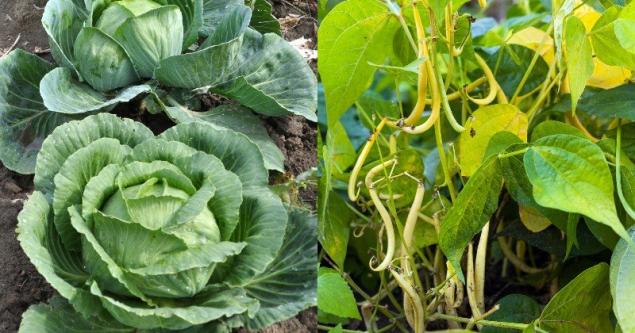
Cabbage
Potatoes

corn
Onions

Carrots
redis
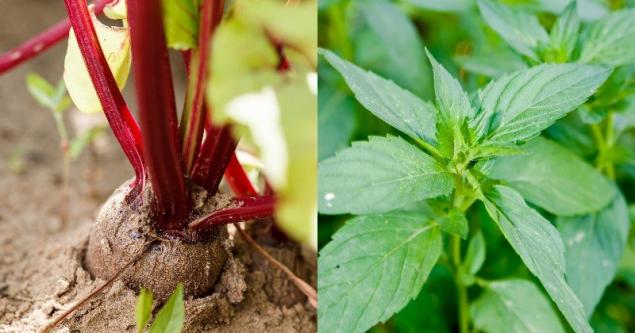
Beets
Pumpkin
beans

Garlic
Watermelon and melons
Now you know, Where and what vegetables to plant. Other possibilities may also be considered. Some gardeners believe that fragrant herbs (primarily basil and monard) improve the taste of tomatoes. In addition, some grassy plants can scare insects away from your site.
"Site" He shares a simple trick that resourceful gardeners use. So that the beds were in order, and radish, garlic, carrots or, for example, onions was much easier to thin, use our advice.
Spring is a hot time when you need to cultivate the land and start planting seedlings or sowing greens and vegetables to then harvest a decent harvest. We talk about the secrets of sowing carrots, knowing which you can grow large root vegetables before the end of summer.

Later, scientists figured out how plants help each other get nutrients, attract beneficial insects for pollination or control pests.
Plants that “friend” and grow better together are called companion-plant. Tomatoes, for example, like the neighborhood of carrots, dill and basil, and the neighborhood of potatoes is harmful.

The strong aroma of basil scares away pests, and carrots, dill, parsley and parsnips attract praying mantises, ladybugs and spiders. These predatory insects feed on bugs that have a habit of spoiling tomatoes.

Tomatoes and potatoes belong to the same nightshade family, and therefore are subject to the same diseases and pests. Together, they will get phytofluorosis faster, and other diseases will spread to them at an amazing rate.
Smooth rows of vegetables with labels are undoubtedly pleasing to the eye and make harvesting easier. However, in nature, we do not see rows anywhere, and few plants grow grouped in homogeneous groups.
Imitating natural biodiversity may make your garden less tidy, but it has been proven to help vegetables grow better. Neighborhood with companion plants makes them more resistant and protects against insects and diseases.

This also explains the strange idea of planting flowers between vegetables, such as velvets, marigolds or nasturtia. Useless, it would seem, flowers attract insect pollinators and thus increase the fertility of squash, peas, cucumbers, tomatoes.

Finally, some plants just don’t get along and get sick when they have to share root space. Pepper and beans do not like to be near each other, peas prefer to be away from onions, and salad does not like to be near broccoli.
List of companion plants

Cucumbers
- Good neighbors.
Radice, peas, celery, lettuce, cabbage, tomatoes, sunflowers, corn, velvets. - Unlucky
Sage, dill, mint, fennel.
Tomatoes
- Good neighbors.
Garlic, basil, carrots, onions, parsley, peas, sage, cabbage, velvets, spinach, salad. - Unlucky
Potatoes, fennel.

pepper
- Good neighbors.
Basil, carrot, oregano, marjoram, onions, velvets, coriander, cat, nasturtium. - Unlucky
Fennel, kohlrabi, beans.
Eggplant
- Good neighbors.
Peas, beans, salad, basil, tarragon, thyme. - Unlucky
Potatoes and tomatoes.

Peas
- Good neighbors.
Carrots, corn, cucumbers, eggplant, salad, radish, spinach, tomatoes, potatoes. - Unlucky
Onions, garlic.
Coucuses
- Good neighbors.
Beans, corn, mint, nasturtium, radish. - Unlucky
Potatoes.

Cabbage
- Good neighbors.
Beans, beets, celery, chamomile, dill, hyssop, mint, nasturtium, onions, oregano, potatoes, sage. - Unlucky
Strawberries, tomatoes.
Potatoes
- Good neighbors.
Beans, cabbage, corn, salad, onions, velvets, radishes, coriander, nasturtium, flax. - Unlucky
Tomatoes, cucumbers, sunflowers, pumpkin.

corn
- Good neighbors.
Peas, melon, pumpkin, beans, soybeans, sunflowers, lupins. - Unlucky
Celery and beets.
Onions
- Good neighbors.
Cabbage, potatoes, strawberries, carrots, lettuce, beets, tomatoes. - Unlucky
Peas, beans, sage.

Carrots
- Good neighbors.
Onions, leeks, garlic, tomatoes, beans, radishes, peas, scorzonera, sage. - Unlucky
Dill, anise.
redis
- Good neighbors.
Cucumbers, beans, peas, cabbage, cauliflower, salad, pumpkin, tomatoes, carrots, parsnips, onions. - Unlucky
Issop.

Beets
- Good neighbors.
Cabbage, kohlrabi, onions, mint, catfish. - Unlucky
Curly beans.
Pumpkin
- Good neighbors.
Corn, beans, sunflowers, peas, tomatoes, radishes, nasturtium, mint. - Unlucky
Potatoes.
beans
- Good neighbors.
Corn, cabbage, cauliflower, beets, pumpkin, carrots, tomatoes, strawberries, chaber, nasturtium, cucumber, velvets. - Unlucky
Fennel, garlic, leek.

Garlic
- Good neighbors.
Tomatoes, carrots, eggplant, cabbage. - Unlucky
Peas, beans.
Watermelon and melons
- Good neighbors.
Corn, peas, radishes, beets, sunflowers. - Unlucky
Cucumbers.
Now you know, Where and what vegetables to plant. Other possibilities may also be considered. Some gardeners believe that fragrant herbs (primarily basil and monard) improve the taste of tomatoes. In addition, some grassy plants can scare insects away from your site.
"Site" He shares a simple trick that resourceful gardeners use. So that the beds were in order, and radish, garlic, carrots or, for example, onions was much easier to thin, use our advice.
Spring is a hot time when you need to cultivate the land and start planting seedlings or sowing greens and vegetables to then harvest a decent harvest. We talk about the secrets of sowing carrots, knowing which you can grow large root vegetables before the end of summer.
